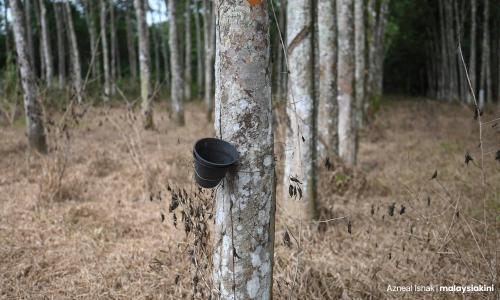LETTER | There's time to revitalise rubber industry
LETTER | The Malaysian Rubber Board (MRB) has just launched the programme to mark 100 years of rubber research in Malaysia.
Yes, the Rubber Research Institute of Malaysia (RRIM) made its debut in global natural rubber research in 1925. Since then, the RRIM has not only made impressive contributions to the development of the rubber industry in Malaysia but also led natural rubber research globally.
Natural rubber scientists then gathered in Malaysia regularly to share the latest advances in natural rubber science. When I joined the RRIM in 1973, the institute was at its peak of rubber research prominence. We had scientists who were globally recognised. We had leaders whose ideas were highly sought after by the world.
As the MRB launches its 100-year celebration, there is not much that we can celebrate. Our natural rubber production is in a mess. We have dropped from the number one position to now be at ninth place.
Much of our rubber cultivation has been untapped for years. We have to import to maintain the processing and the downstream business.
It is no wonder that our rubberwood furniture business is also badly affected. Our research is nowhere near the reputation we enjoyed those years.
We are not looking at new research ideas. We do not collaborate much with others. We shy away from making our presence felt at international rubber meetings. I somehow feel we have lost the confidence to further the cause of the rubber industry.
Clearly, there is much that needs to be done.
Strategic measures
To save and revitalise the rubber industry in Malaysia, several strategic measures can be implemented. Consolidation has been suggested. But the reception has been cold.
The MRB has to offer a plan for change. It has to be actively engaging the stakeholders regularly to find solutions.
Yes, many agree that consolidation of small farms can make a lot of difference.
The declining yield of the smallholder rubber holdings can be traced back to the poor deployment of technology. Poor planting materials, poor agronomic management, inferior fertilisation, poor tapping practices and poor handling of the latex.
This has inadvertently resulted in poor rubberwood quality.
We must invest in the right research and development to address such shortcomings and improve the quality and yield of rubber. We must develop new rubber clones and actively participate in the International Rubber Research and Development Board clone exchange programme.
Collaborate with others
We no longer have the luxury to be selfish in keeping our technologies to ourselves. Instead, we should influence other rubber research partners around the world to collaborate.
There is a call not just to confine our breeding research to getting the highest yield of rubber, but also the clones to yield the best timber fast. Disease-resistant clones will continue to be an important feature.
As climate change rages on, we see the emergence of debilitating diseases like pestalotiopsis.
As labour problems pose a high risk to the viability of the industry, we need to adopt advanced agricultural technologies, such as precision farming, to optimise the use of resources and increase efficiency.
Again research is key. In the downstream sector, we need to encourage diversification into high-volume and high-value rubber products.
We have been over-dependent on the tyre sector which consumes almost 70 percent of the rubber produced. We are therefore at their mercy when trying to make prices more attractive for our farmers.
It is no secret that the failure of the earlier rubber price stabilisation scheme was a result of excessive manipulation.
We need to create other high-volume outlets to reduce dependency on tyres. One that comes to mind is the energy market, the biofuel.
Sustainability is key
As sustainability continues its grip on businesses worldwide, the phasing out of fossil fuels is seen as inevitable. The world will need bioenergy in big volumes when that happens. If the palm oil industry can succeed in entering the biofuel business, why not natural rubber?
In fact, natural rubber has a better chance because it is 100 percent hydrocarbon. One only needs to do some chemical tweaking. It is not impossible because biomass-to-energy technologies are already very advanced. Again collaborative research is the way forward.
Implementing sustainable farming practices should no longer be compromised to protect the environment and ensure the long-term viability of the industry. There have been suggestions to strengthen rubber cooperatives and associations to improve the bargaining power of smallholders and facilitate collective marketing and purchasing.
Let us make this 100-year mark as the turning point for rubber research. We should explore new research directions. We need to instil greater confidence in our researchers by exposing them to international debates on rubber.
This is the only way to reinvigorate the rubber industry in Malaysia.
The views expressed here are those of the author/contributor and do not necessarily represent the views of Malaysiakini.
RM12.50 / month
- Unlimited access to award-winning journalism
- Comment and share your opinions on all our articles
- Gift interesting stories to your friends
- Tax deductable
